Drone developments out of Ukraine accelerate with each passing day. Nothing spurs development, for better or worse, like conflict and both sides are wrestling to gain any advantage in the unmanned domain. This means rapid iterative development and vast proliferation that have major spillover effects far beyond the front lines. The latest example of this is Ukraine equipping its large industrial quadcopter drones, nicknamed by the Russians “Baba Yagas” (a reference to the ferocious old woman who eats children in Slavic folklore), with guided munitions. This would allow these drones to strike even the most hardened of armored vehicles while they are moving, with great precision, and do so over and over deep behind enemy lines without having to hold a steady position above their target.
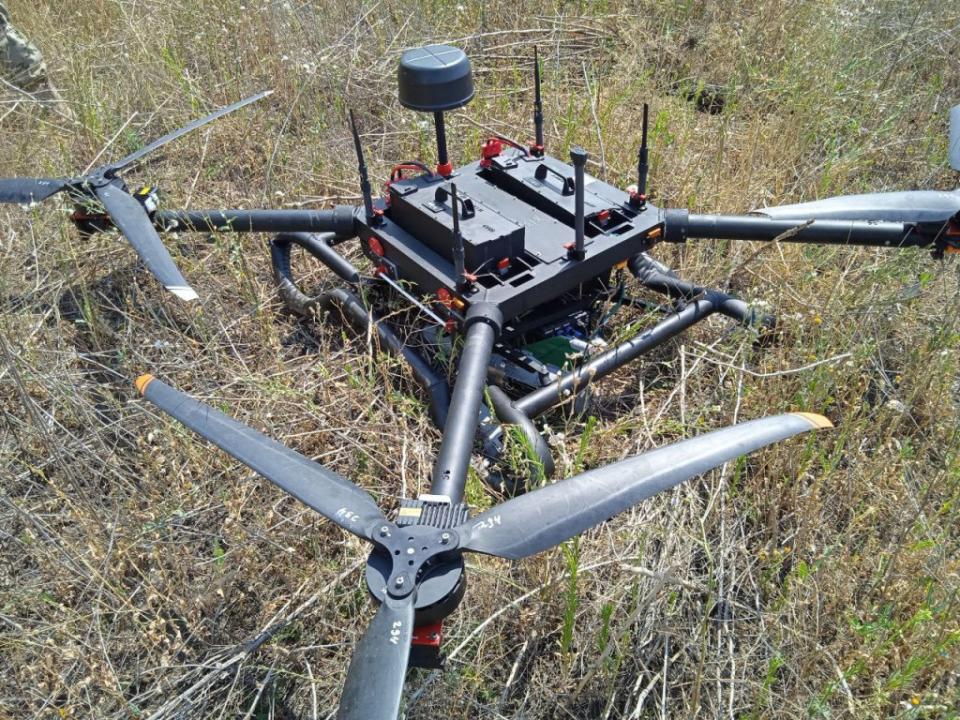

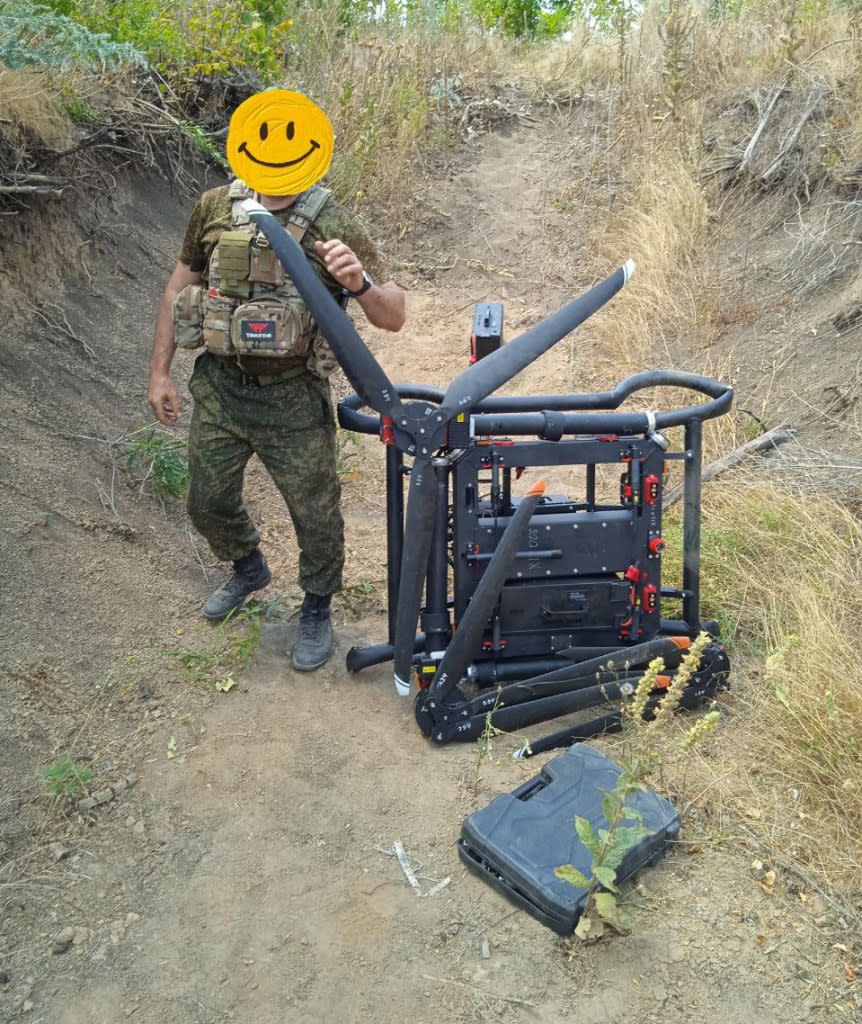

Images of a Baba Yaga captured by Russian forces emerged on Telegram today. They show the Baba Yaga festooned with antennas largely intact, as well as a very peculiar munition, one that has a seeker head that appears to be designed for laser guidance, although other possibilities also exist, including an electro-optical type. The weapon is marked BK-30F in Cyrillic and has what appears to be a relatively large fragmentation warhead section that takes up the middle of its body.


The exact type of weapon is unclear, but it could be an outgrowth of the 9K112 Kobra missile or one of its many iterations and clones, the latter of which Ukraine has developed in a wide number of configurations.

The Kobra is a Soviet-designed weapon that originally used semi-automatic command to line of sight (SACLOS) guidance. Designed to be launched from the barrel of a tank, the Kobra was guided onto its target using an optical sight, similar in fashion to how the American TOW missile does its job. Subsequent iterations of this basic missile design have been used as a basis for tube-launched anti-tank guided missiles. Ukraine’s widely deployed Stugna missile system appears at least inspired by the design, along with a number of others. .
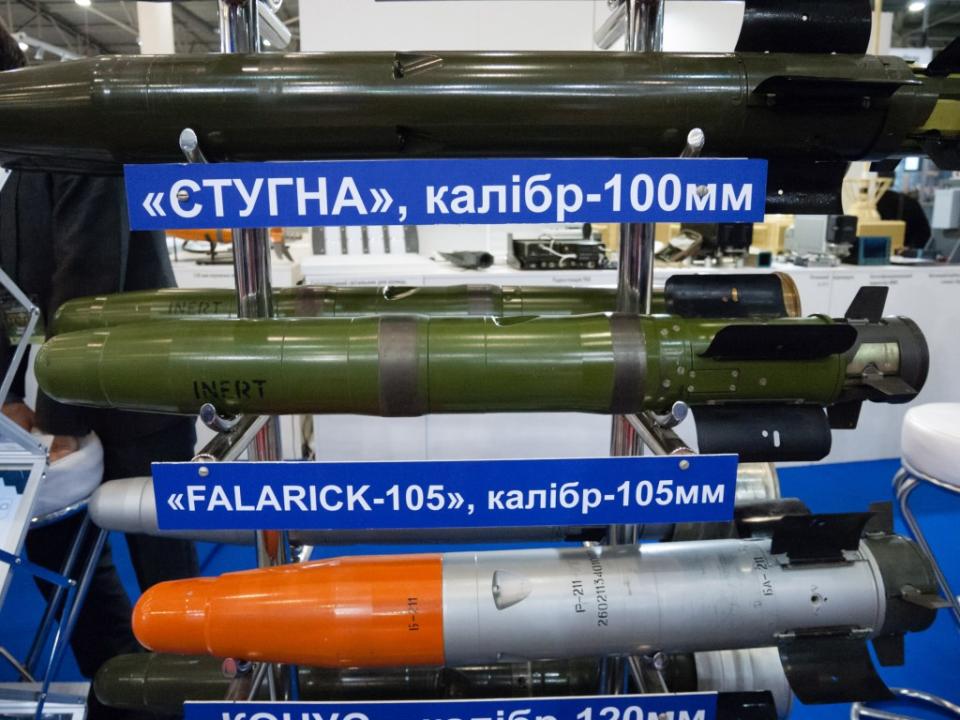

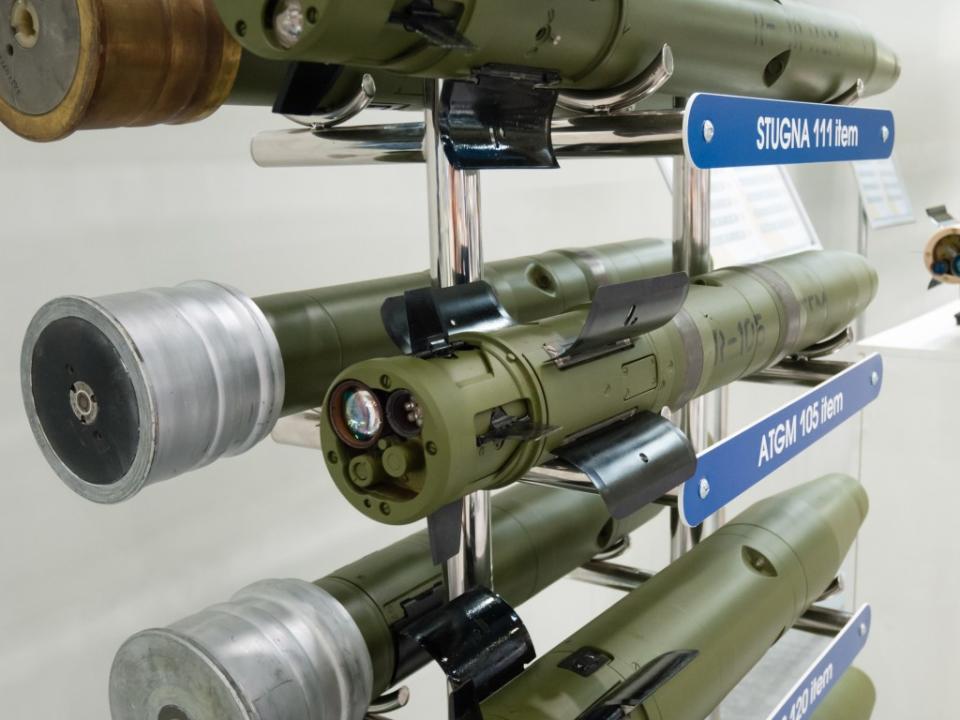



The fins on the “BK-30F” munition do not outright appear to be bowed to conform to the missile’s body, either, which is key for launching via a tube or a tank’s main gun. This could be just the image. It could also be that these weapons are produced without the spring-loaded fins to save time and money or that they are adapted from a non-tube-deployed variant. The smaller rear control fins are not visible in this image, although they may have broken off.
Regardless, even if the munition recovered together with the Baba Yaga is not directly evolved from the weapons mentioned above, Ukraine is very capable of making a guided munition like the one seen in the image.
Pairing weapons like this with Baba Yaga drones does make good sense. These uncrewed craft are not cheap or disposable weapons like their first-person view (FPV) counterparts. They are industrial-grade systems that are often used for agricultural and commercial applications. They cost tens of thousands of dollars each and can lift significant payloads over dozens of kilometers. So, while increasing their lethality is always important, increasing their survivability is just as critical.
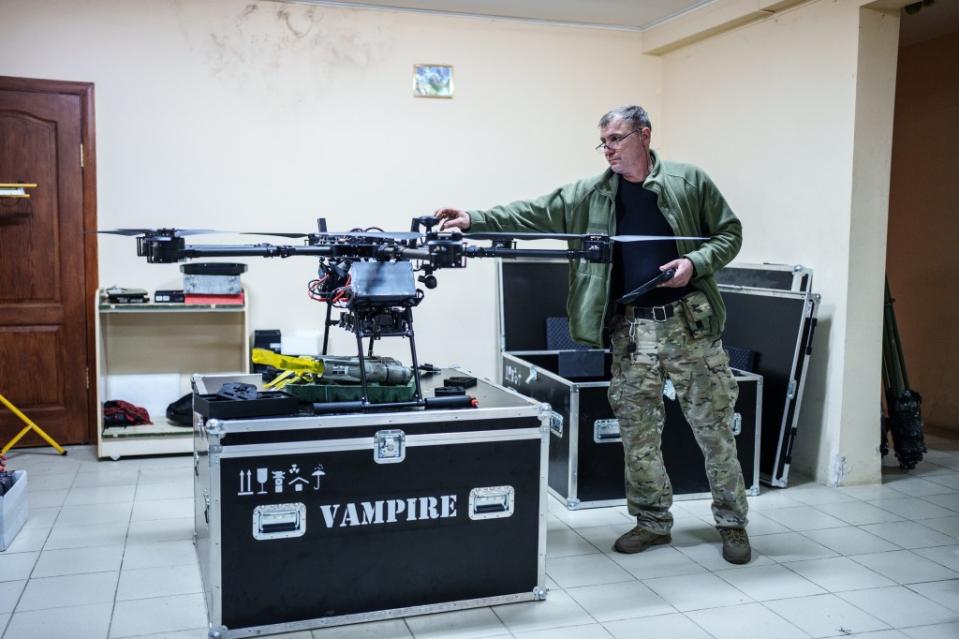

Even if not equipped with rocket motors and just used in a free fall mode, the guided munitions would allow the Baba Yagas to engage targets from much higher altitudes and while not having to hang directly over the target they are attacking. The drones can then continue to move throughout the engagement, which would be a big help with increasing survivability. The weapon shown in the pictures that emerged today, if indeed directly related to established anti-tank types, would be very capable, both in an anti-armor and anti-personnel role, with far more explosive punch than small drone-dropped bomblets and the warheads used on many FPV drones. We are talking about a true anti-tank or heavy anti-personnel capability here.
If the missile retains its rocket motor in this configuration, and it can be reliably ignited and guided after being dropped, this could drastically increase the standoff distance that the Baba Yaga could engage targets from. The Kobra missile could hit targets up to around two-and-a-half miles away when fired from a tank. The Stugna-P has even farther reach. This would be extended significantly farther when fired from altitude, but even a few miles range would greatly expand the tactical flexibility of an armed Baba Yaga.
Laser designation would come via an electro-optical/infrared sensor turret with a laser system. These have become increasingly miniaturized and affordable for use on smaller drones, and they are well within the lifting capacity of the Baba Yaga. Even a man-in-the-loop electro-optical seeker and control capability is possible with the right communications link.
In terms of operational applications, the Baba Yaga is capable of venturing into the Russian rear areas, miles from the front lines, to hunt for targets. This opens up a huge vulnerability for enemy forces. Russia is also gaining this ability too. The use of airborne repeaters/relays to extend the connectivity range of drones large and small is also something the Baba Yaga is not only tasked with providing, but also can benefit heavily from.
By using a repeater, this large quadcopter can penetrate deeper into Russian-held territory, striking targets where the enemy isn’t as prepared to defend against such attacks. If you add laser-guided munitions to its armament portfolio, it means it can take out targets with precision from many thousands of feet in the air. At those altitudes, its line-of-sight connectivity to its operators would be greatly extended, as well.
So, overall, we are talking about a true synergistic capability here beyond just these drones gaining a more precise munition. Only Ukraine’s much more complex and expensive Bayraktar TB2 fixed-wing drones have the ability to employ guided munitions like this. They saw heavy service during the early part of the war, but suffered heavy losses as Russia’s massive anti-air overlay was established across large swathes of Ukraine.
#Ukraine: We present some exclusive recent footage from the eyes of the Bayraktar TB2 drone in the hands of the Ukrainian military.
A 9K317 Buk-M2 TELAR, part of the infamous convoy, completely destroyed. pic.twitter.com/PUiWkeOPwm
—
Ukraine Weapons Tracker (@UAWeapons) March 7, 2022
Using the Baby Yagas’ range and payload to deliver precision-guided munitions weapons is certainly a new facet of the drone war in Ukraine, but one that is also a logical evolution. While these drones are not cheap, this brings the ability to deliver these kinds of attacks behind enemy lines into the attritable cost bracket. This is something the far more capable TB2s, which were also easier to detect and engage, simply couldn’t accomplish. As a result, we will likely see the rapid expansion of this capability in the near future.
Contact the author: Tyler@twz.com








